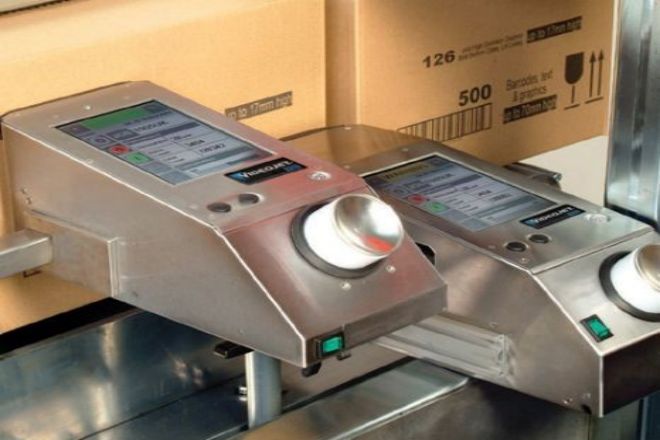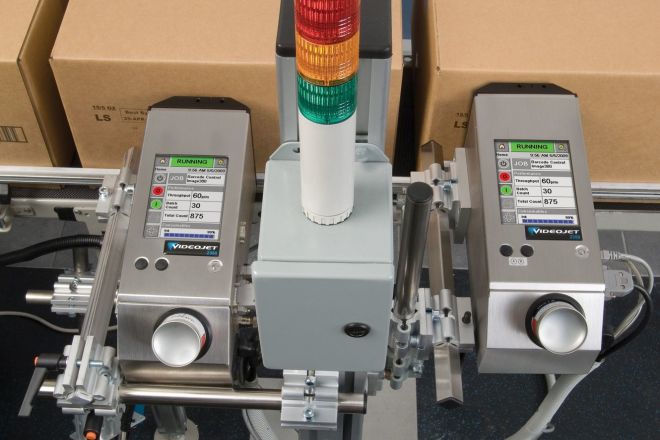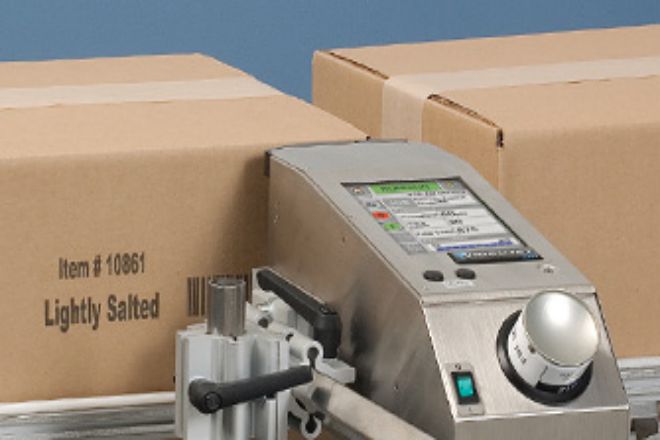Introduction
 There will be a barcode representing your identity on each carton, which is equivalent to the ID card of the carton. After scanning the code, you can get some information about the carton. So how did this barcode get on the carton? In the era of rapid logistics development, what equipment can quickly and accurately make barcodes?
There will be a barcode representing your identity on each carton, which is equivalent to the ID card of the carton. After scanning the code, you can get some information about the carton. So how did this barcode get on the carton? In the era of rapid logistics development, what equipment can quickly and accurately make barcodes?
Today this article will answer this mystery for you and take you to understand what equipment can quickly and accurately complete the printing of barcodes. Let’s take a look.
1. What is a bar inkjet printer?
A bar code printer is a device used to mark bar codes or other related information on cartons. It encodes product information, production date, production batch, and other information into bar codes through inkjet technology and prints them on the surface of the product. It uses inkjet technology to accurately print the marking content on the surface of the carton to achieve the purpose of tracking and management.
2. Work steps

Prepare to mark information: Enter or import the barcode or related information to be marked, including product code, batch number, date, etc.
Set inkjet parameters: According to the marking requirements, set the parameters of the inkjet printer, such as inkjet location, inkjet speed, inkjet density, etc.
Conveying the cartons: The cartons pass through the conveyor belt system and are ready to enter the coding area.
Coding operation: The bar code printer sprays ink on the surface of the carton according to the preset parameters to form a bar code or other marking information.
Detection and verification: Detect and verify the coding results through sensors or camera systems to ensure the accuracy and quality of marking.
Carton departure: The marked carton leaves the coding area and enters the subsequent packaging and transportation links.
3. Working principle
Barcode printers use inkjet technology for marking. It includes an ink system, a control system, and jetting terminal. The ink system is responsible for supplying ink, the control system controls the jetting and coding parameters of the ink, and the jetting terminal is responsible for spraying the ink on the surface of the carton. The inkjet head is arranged in one or more rows through the micro nozzles, and the precise marking on the carton is realized through the jet control and precise mechanical movement.
4. Types of bar printers
 At present, the bar printers on the market are mainly divided into two categories: inkjet printers and inkjet printers.
At present, the bar printers on the market are mainly divided into two categories: inkjet printers and inkjet printers.
- Inkjet printer:
According to the printing method, the bar printer is divided into 2 types: contact type and non-contact type.
1). Contact barcode printer: It is necessary to contact the nozzle with the surface of the carton and then release the ink to form the corresponding barcode or text information. For some rough and special carton packaging, you can choose a contact bar inkjet printer that can adapt to complex surfaces.
2). Non-contact bar inkjet printer: No contact is required. Through laser or inkjet technology, the nozzle or laser beam is focused on the place to be printed, and the corresponding barcode or text information is printed. For high-gloss, high-quality cartons that have been coated, high-definition non-contact bar inkjet printers can be used to achieve more efficient and beautiful printing effects.
- And the inkjet printer:
It is capable of printing complex images such as patterns and corporate logos on carton packaging.
5. Tips for choosing a bar printer

Choose according to your needs: When choosing a bar printer, you need to consider the actual needs and choose according to factors such as printing type, working frequency, and environmental parameters.
- Confirm the printing quality:
Good printing quality is one of the most critical indicators for choosing a bar printer. Understanding the differences in the surface properties of carton packaging and the quality of accessories, such as inks, nozzles, spray chambers, etc., will help to choose a barcode printer with better printing quality.
- Consider the cost of consumables:
When purchasing a bar printer, you need to consider not only the price of the equipment itself but also the cost of consumables, such as ink, nozzles, ink, etc. When choosing, it is necessary to have an in-depth understanding of factors such as the price and lifespan of consumables so as to avoid unnecessary financial pressure in later operations.
- Brand and after-sales:
When choosing a bar printer, you should give priority to well-known brands and understand their after-sales service policies to ensure equipment protection and maintenance services.
- Scalability:
The scalability, compatibility, and integration of the bar code printer are also one of factors that need to be considered when choosing so as to connect with other packaging equipment seamlessly, especially for some enterprises that need to support more functions or higher efficiency in the future.
Conclusion
A bar inkjet printer can improve production efficiency and traceability and ensure the traceability and management of products in the supply chain. Different types of inkjet printers have their own characteristics and scope of application, and enterprises should choose appropriate equipment according to specific needs.
To choose a suitable bar printer, you need to comprehensively consider factors such as coding requirements, supplier reputation, equipment stability, and cost.
